Scenes: Episcopalians join Native Nations Rise march and rallyPosted Mar 10, 2017 |
|
[Episcopal News Service — Washington, D.C.] The Episcopal Church has advocated with the Sioux Nation against the Dakota Access Pipeline’s route since summer 2016. A number of lay and ordained Episcopalians came to Washington, D.C., for all or part of the March 7-10 Native Nations Rise events. Below are some scenes from the March 9 “Standing As Stone: Indigenous Nations and Allies Gather in the Washington National Cathedral” and the march and rally on March 10. Other Episcopal News Service coverage is here.
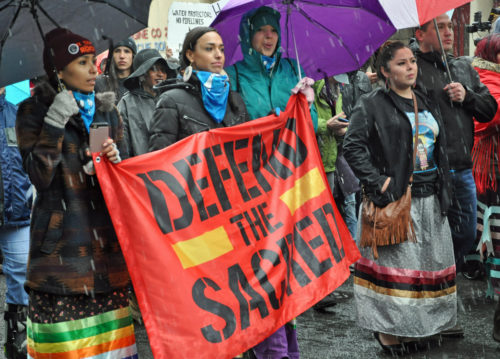
An icy rain fell on the start of the March 10 Native Nations Rise demonstration and rally in Washington, D.C., but the sun was out by the time the marchers reached Lafayette Square across from the White House two hours later. Photo: Mary Frances Schjonberg/Episcopal News Service
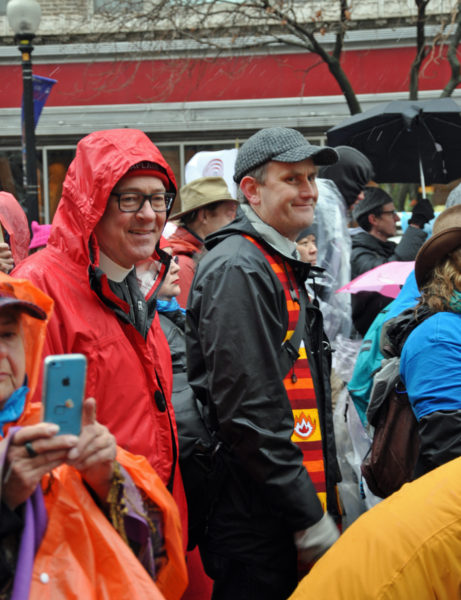
The Rev. Peter Stebinger, left, and the Rev. Matthew Lindeman, both of Connecticut, came to Washington, D.C., for the March 10 Native Nations Rise demonstration and rally. Photo: Mary Frances Schjonberg/Episcopal News Service
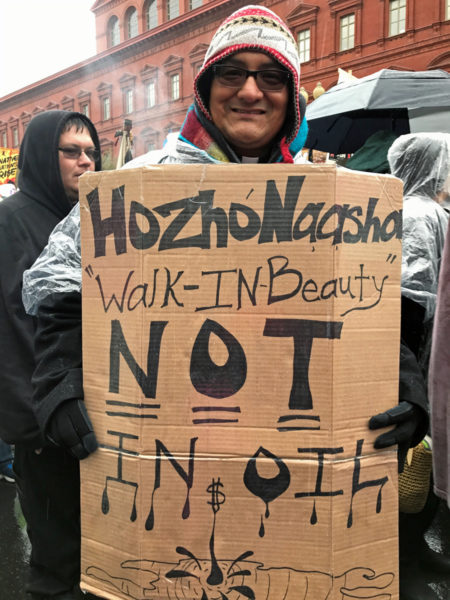
The Rev. Leon Sampson from the Diocese of Navajoland holds a sign as he marches during the March 10 Native Nations Rise demonstration and rally. Photo: Mary Frances Schjonberg/Episcopal News Service

The Rev. John Floberg wears an Episcopal flag around his shoulders as he marches during the March 10 Native Nations Rise demonstration and rally. Photo: Lauren Stanley
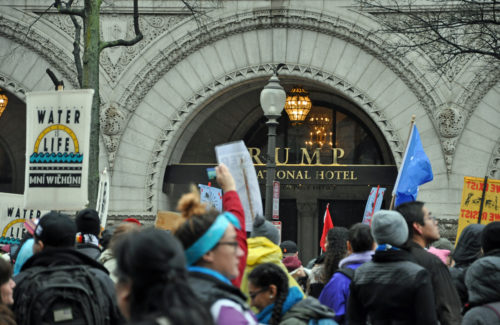
Marchers in the March 10 Native Nations Rise demonstration and rally in Washington, D.C. pause outside the new Trump International Hotel. Photo: Mary Frances Schjonberg/Episcopal News Service
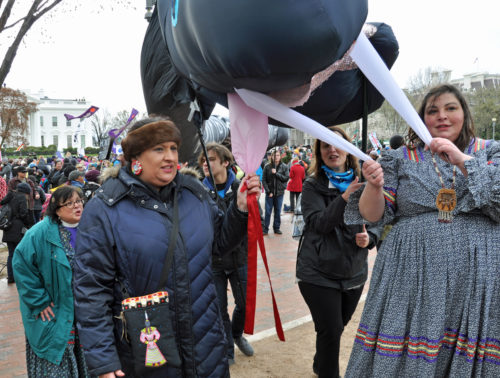
Diocese of Montana Assistant Bishop Carol Gallagher (green jacket) and her daughter, Emily, right, help bring one of two “black snakes” from outside the White House into Lafayette Square at the end of the March 10 Native Nations Rise demonstration and rally. Dakota Access Pipeline opponents have referred to the oil pipeline as the “Black Snake.” Photo: Mary Frances Schjonberg/Episcopal News Service
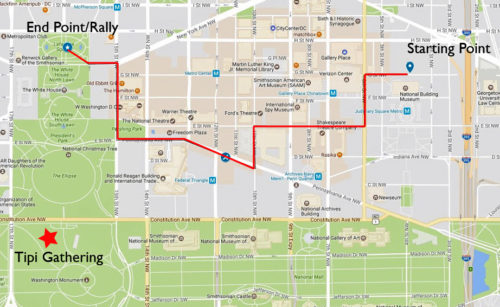
The 2-mile “Native Nations March on DC” led participants from the U.S. Army Corps of Engineers’ office on G Street N.W. to a rally in Lafayette Square near the White House. Graphic: Nativenationsrise.org
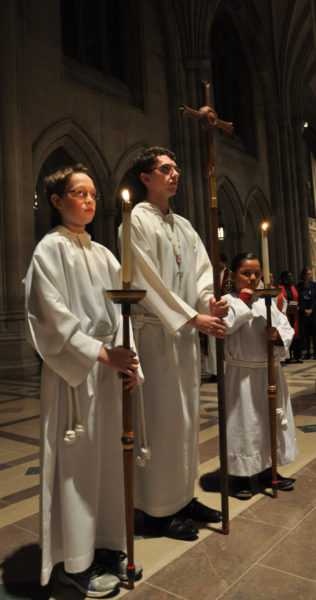
Crucifer Joshua Floberg and torchbearers John Michael Floberg, left, and Innocent Mauai wait to lead the procession into the March 9 “Standing as Stone: Indigenous Nations and Allies Gather at the Washington National Cathedral.” Photo: Mary Frances Schjonberg/Episcopal News Service
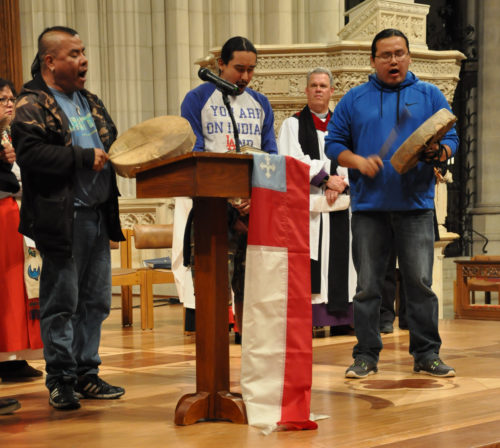
A group of drummers and singers from the Standing Rock Sioux Nation participate in the Standing as Stone service. Washington National Cathedral Dean Randolph “Randy” Marshall Hollerith stands in the background. Photo: Mary Frances Schjonberg/Episcopal News Service
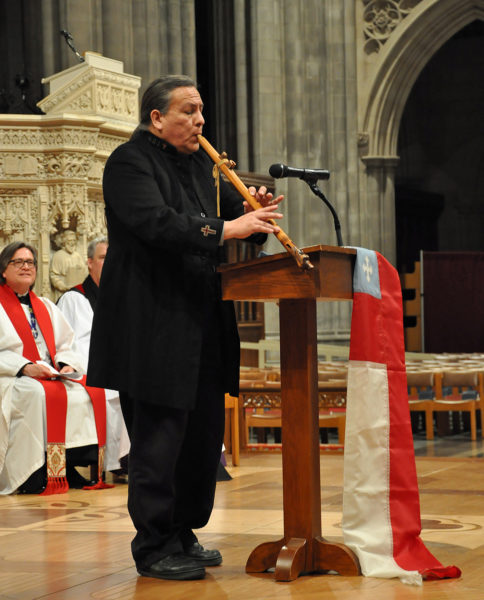
Standing Rock resident and artist Dakota Goodhouse plays the flute as an offering during the Standing as Stone service. Photo: Mary Frances Schjonberg/Episcopal News Service
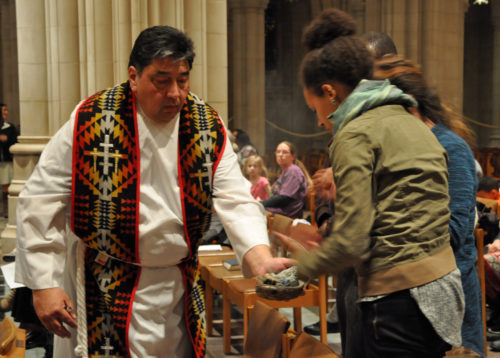
Washington National Cathedral and the worshipers present were smudged March 9 before prayers during the Standing as Stone service. Photo: Mary Frances Schjonberg/Episcopal News Service
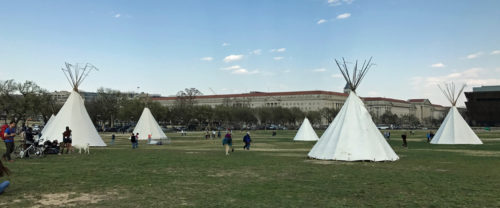
Six teepees, erected by Native Nations Rise, sit on the northwest grounds below the Washington Monument. The March 7-10 symbolic encampment (there was no overnight sleeping) featured cultural presentations and speakers. The White House is about two blocks from the upper left of the photo. Photo: Mary Frances Schjonberg/Episcopal News Service




Social Menu